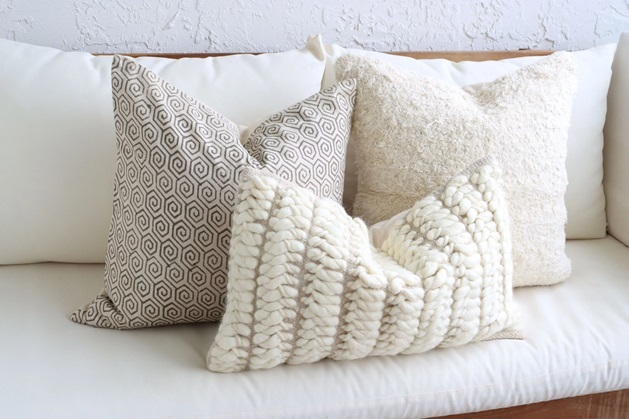Your home serves as your own personal sanctuary. When life becomes overwhelming, it’s where you should feel comfortable and at ease. What you may not realise, however, is the way you arrange a space may greatly affect how you feel while you’re in it. While cluttered spaces might have a disturbing effect on your mood and mental health, a well-designed place packed with the things you love can be soothing and ease stress. Create a stress-free environment using the following decorating tips.
1. Start with a Neutral Palette
Bright colours are harder on the eye than muted, neutral tones. Although many enjoy decorating with colour since it can be joyful and exciting, I do think that neutral rooms can also inspire and spark your interest. Aside from being calming and relaxing, they are made to warm up your living space and make you feel cosy.
Use a lot of texture when decorating with white or light-toned neutrals (such as beige, off-white, or taupe) to add interest. Add layers of different textiles and subtle patterns to break up the monotony of flat white walls and furniture. To avoid having too much white, use warm hues like gold, mild tan, or faded yellow.
2. Throw in Some Decorative Cushions

Aside from beauty and comfort, decorative cushions and pillows can provide numerous health benefits. They provide support and can assist you in sitting or lying in the healthiest position for your spine. Maintaining the health of your spine is critical for avoiding back pain and other health problems that worsen over time. When you’re lying on the couch or bed, reading or watching TV, remember to pay attention to your body position and use pillows to compensate.
When designing a soothing interior with neutral decorative cushions try varying the textures to provide a lot of interest. Combine a soft linen cloth with a piece of rough burlap fabric. Blend hefty cotton with a thick chenille. Trim is another way to provide texture. Consider fringe, tassels, or buttons as cushion accents. You may bring your own particular flair and charm to your room by combining shades and fabrics of your sofa and cushions.
3. Create a Cluster of Colour
Don’t be afraid to also add a few accessories in vibrant colours and patterns, such as decor pillows or rugs, for a boost of joy and optimism. The eye and the mind can be drawn to pottery in a favourite colour, brilliant artwork, a vase in a jewel tone, and other objects of intense colour. Favourite items should be grouped together to form a focal point to enhance their calming effect. In this manner, you can enjoy the products’ overall joy each time you pass by. Make sure to pick a location that is a centrepiece like a console table in the foyer or a fireplace mantel.
4. Maximize the Appeal of a Fireplace
A fireplace doesn’t have to be lit to create a comforting atmosphere. To fully enjoy the hearth’s calming allure, pay close attention to everything about it. To create a comfortable setting, add ornamental touches to the walls and floor adjacent to a fireplace.
When not in use, a decorative screen, a grouping of birch branches, or an arrangement of pillar candles can illuminate the firebox. Otherwise, the empty, gloomy space might take away from the room’s calming impact.
5. Warm it up with Candles
Make use of candles throughout your home since their gentle glow lends a feeling of comfort to any setting. I enjoy lighting candles in the kitchen and living room in the morning and letting them burn there until dusk. It adds a touch of luxury and a sense of calm to my day.
Keep plenty of candles (tapers, pillars, or votives) and a few of your favourite candleholders on hand so you always have plenty available. Just remember to blow them out before you go to bed or leave the house.
6. Use Plants to Bring Freshness
Plants add an organic, fresh feeling to any room. The right ones can even help purify the air we breathe, so there’s more than one reason to get them. Look for plants that are easy to care for indoors. Keep them by the windows, of course, and if actual plants are too much work for you, consider faux ones.
7. Strategically Decorate the Floors
People often overlook the importance of floors on the appearance and feel of a room. Rugs, for example, can divide rooms into distinct zones. They can signify areas of concentration and attention.
A suitably spectacular or one-of-a-kind rug might even make a place appear wealthy. You’d probably need something like a custom area rug for that. Fortunately, whichever aesthetic you’re going for, there are many different types and styles of carpets and rugs you can explore. You get bonus points if you combine their colours with those of the stylish decorative cushions for a more put-together result.
8. Check Your Room Acoustics
Decorating is more than simply aesthetics. As previously said, other senses are involved, therefore textures and even scents should be addressed. In addition, you should consider sound. You know, even a room’s acoustics may make it feel cooler.
For example, if there is a faint echo in the room, it can feel incredibly impersonal. Soften this by including décor or draperies that absorb sound and eliminate hollow echoes.


